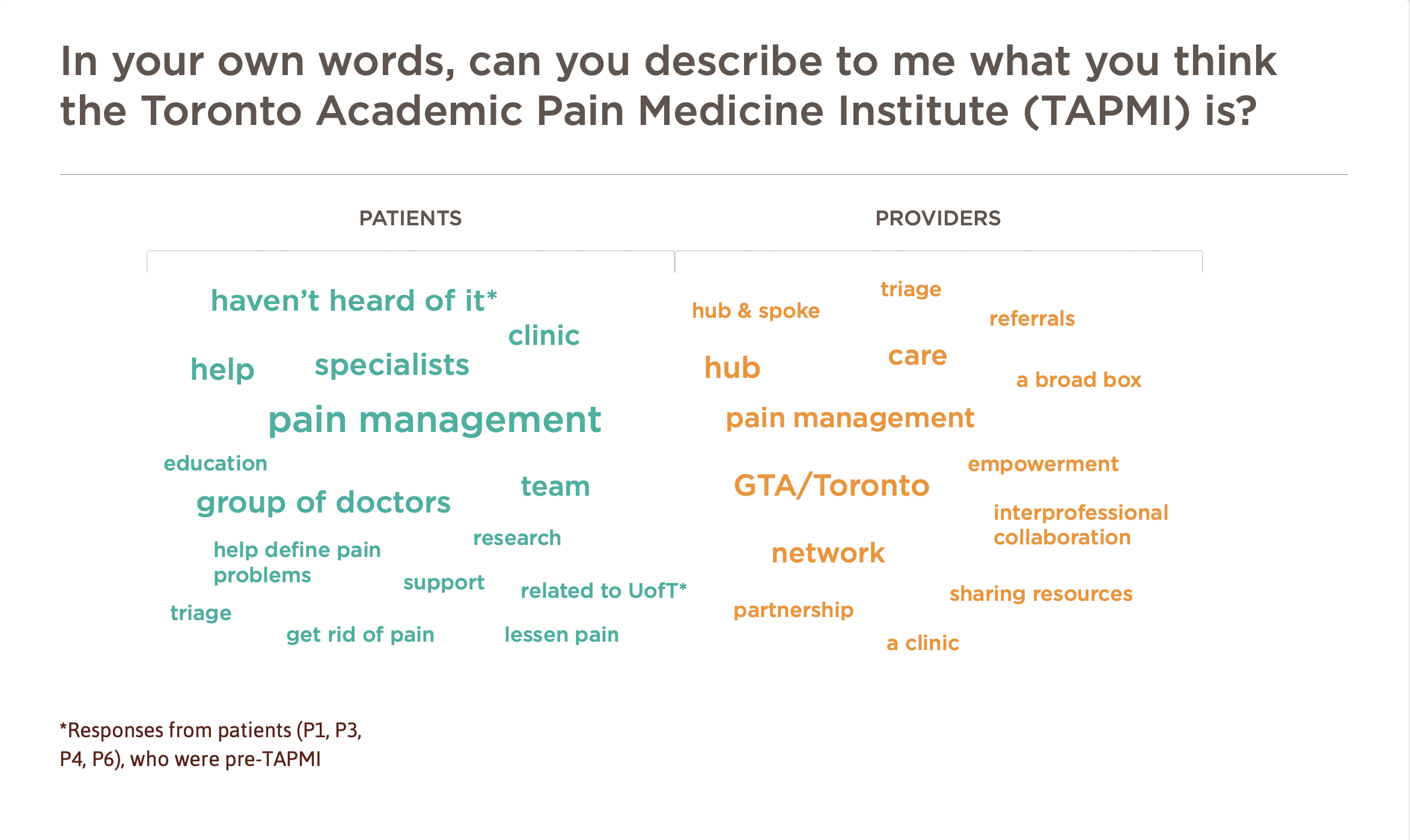TAPMI: Pain Management Service Design Project
Responsibilities: Project Lead, Researcher, Designer
Completed while at Pivot Design Group
The Toronto Academic Pain Management Institute (TAPMI) was created as a hub for pain management in Toronto. By combining the skills and expertise of 5 key centres for pain management, the idea was to give patients improved and more timely access to care while at the same time simplifying the intake process and allowing physicians to more quickly and efficiently see patients who are most able to benefit from their specialties.
Several years into the creation of TAPMI, they were looking for an outside-in, service design perspective to better understand how the new central hub approach to pain management was doing.
Key Project Deliverables
User Interviews & Landscape Review
Co-design Worksession
User Personas & Research Synthesis
Service Design Blueprint
Recommendations on a New Model of Care

Research Approach
The project began, as they often do, with a check-in on the existing project personas. Who did we set out to design for? Have these user archetypes changed since the inception of TAPMI? How do we think their needs have changed? Are there new users or scenarios worth identifying and designing for?
These critical questions lead the user interviews and overall research approach. Interviews were conducted with patients, therapists (PTs and OTs), and physicians involved with TAPMI across all 5 sites.
Design Solution: Service Blueprint
Findings from these interviews were compiled into a key themes presentation to TAPMI stakeholders. The interview findings were further scaffolded by a stakeholder co-design session whose main purpose was to review and rethink the current pain patient journey through TAPMI. Where are the major/minor frustration points on the path and how can we provide better care?
Findings were visualized into User Persona documents and a “future state” service design blueprint which outlined an updated stepped model of care which would allow a more streamlined approach to patient intake and triage as well as a more holistic and prioritized approach to delivering patient care while directing them to the most relevant pain clinic based on a thorough needs assessment at intake.



